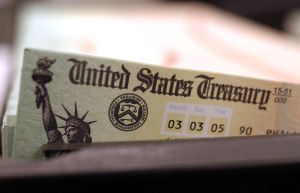An atheist activist group has called for the removal of the "miracle cross" found at Ground Zero from the National September 11 Memorial and Museum.
American Atheists officials claim the 17-foot cross that appeared amid the rubble of the World Trade Center attacks shouldn't be displayed at the museum because it doesn't represent the various religions of the people who died in the 2001 tragedy.
According to CBS, emergency response teams regarded the structure as a source of hope, but others are worried displaying the cross-shaped steel beams in the museum presents a direct violation of the separation of church and state.
The activist group has put forth a legal challenge against the addition of the "miracle cross" to the memorial facility, urging museum organizers to either remove it from the building, or introduce a similar panel to honor the atheists who died at the site of the Twin Towers.
"We're arguing for equal treatment in some way, whatever that might be," Edwin Kagin, who is representing the group in the legal case, told CBS last week.
Although the organization hasn't submitted an official plan, an idea was presented to post a plaque near the cross that emphasized the different religious affiliations of people who perished in the 9-11 attacks.
"This is part of religious history. It's an act of religious symbolism," spokesperson for the New York City Atheists Ken Bronstein told CBS. "That miracle cross should be moved back to St. Peter's where it was for five years."
But officials at the museum argued last week that the cross doesn't automatically render the entire memorial site a religious one.
"This was a sign of consolation," ex-Ground Zero chaplain Father Brian Jordan said. "It was never meant to hurt anyone, hurt the atheists or anything like that. It's an artifact that should be included in the museum because it's a history museum. This is a part of the memory of 9/11."
New York Supreme Court Judge Reena Raggi told FOX News that she agreed with National September 11 Memorial and Museum officials, saying that removing the cross might require too much hassle.
"There are countless cases of museums including religious artifacts among their exhibits and it's going to be described in a way that talks about the history of the object," she said. "What is the problem here?"
The court is slated to rule on the cross question over the course of the next few months.
© 2025 HNGN, All rights reserved. Do not reproduce without permission.








